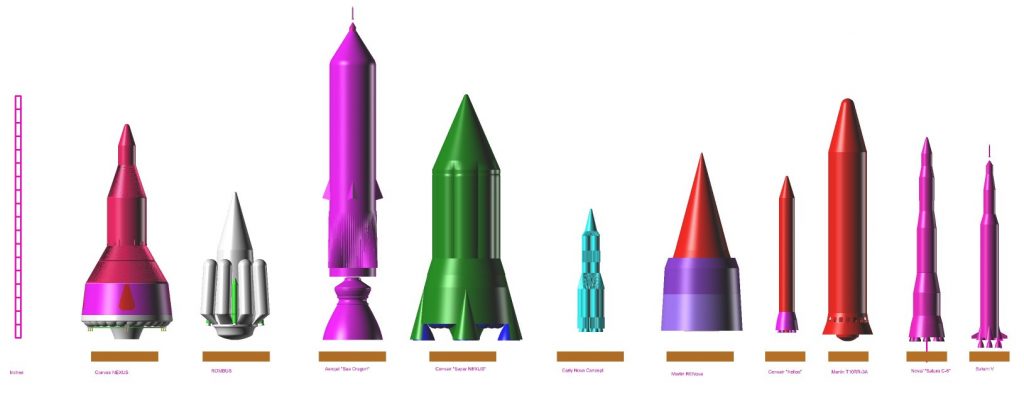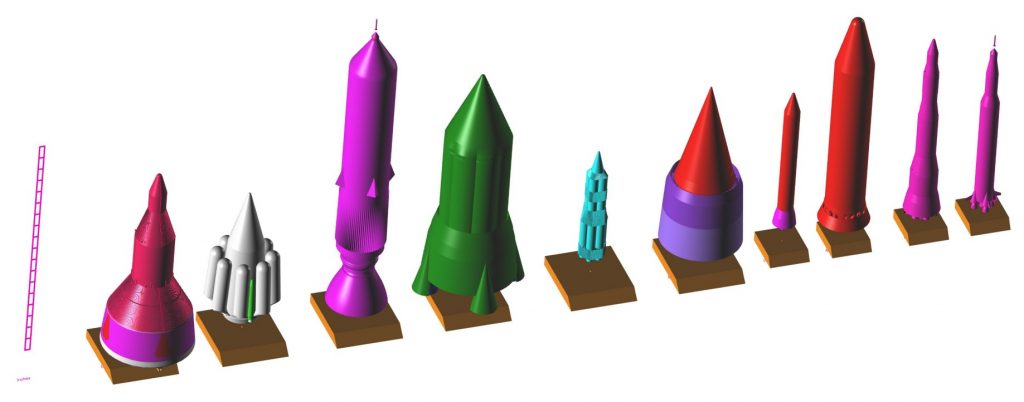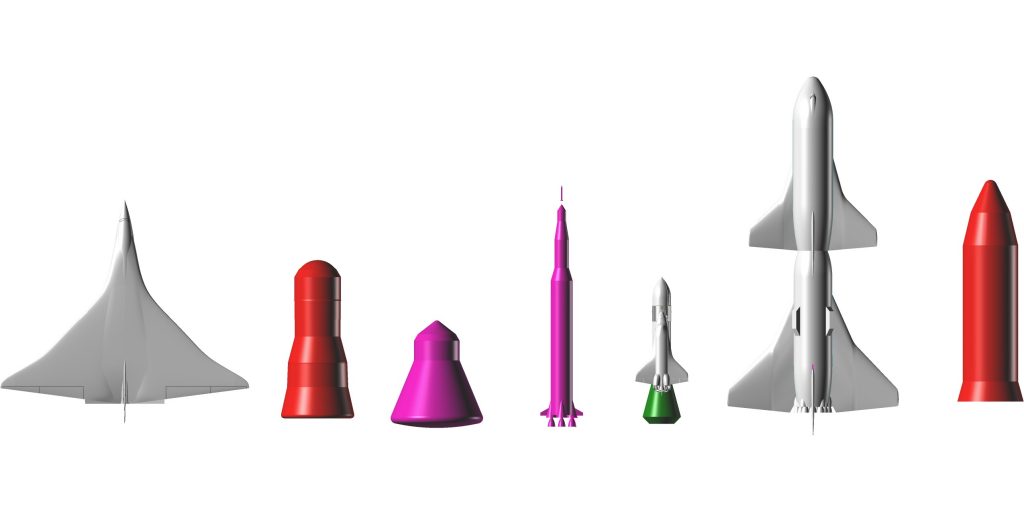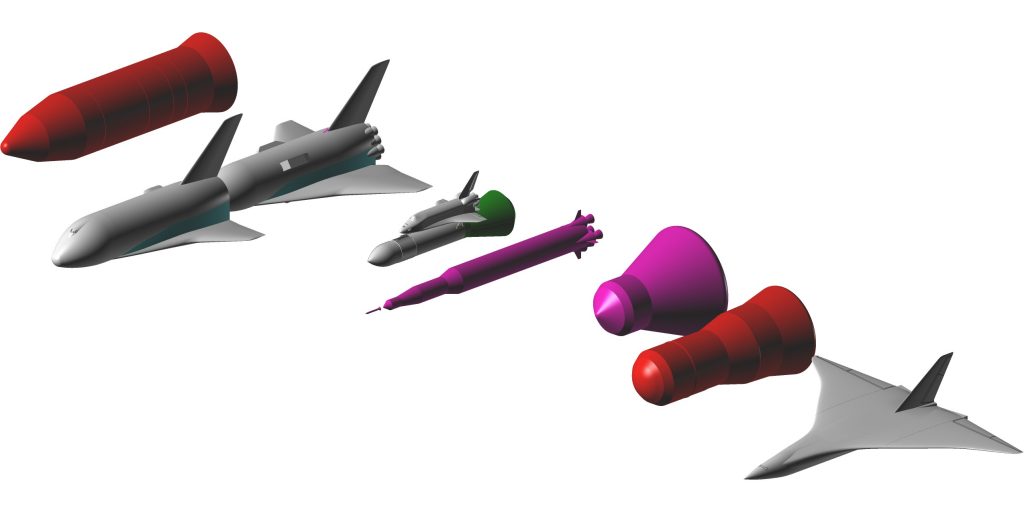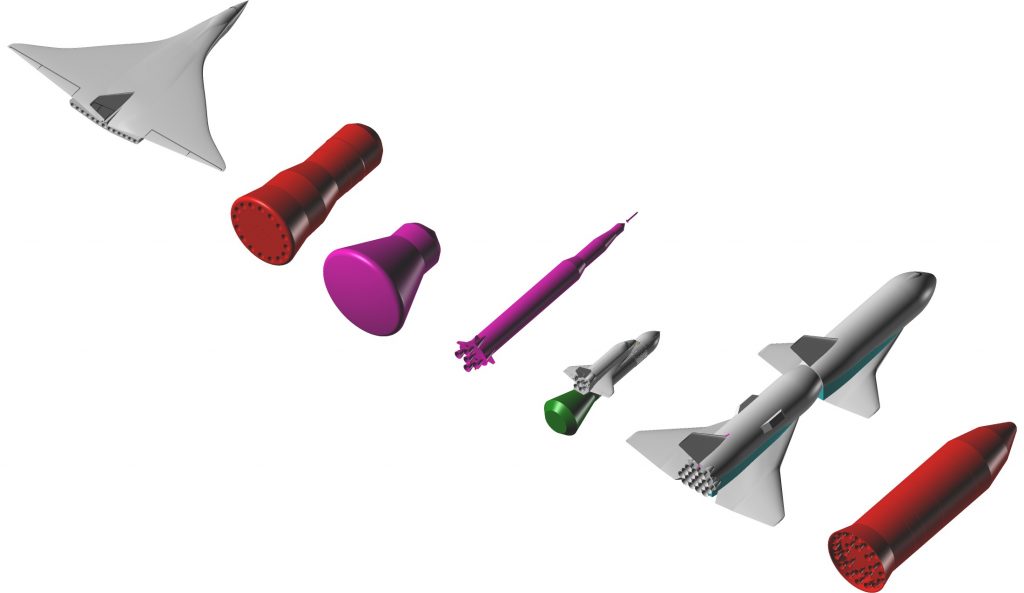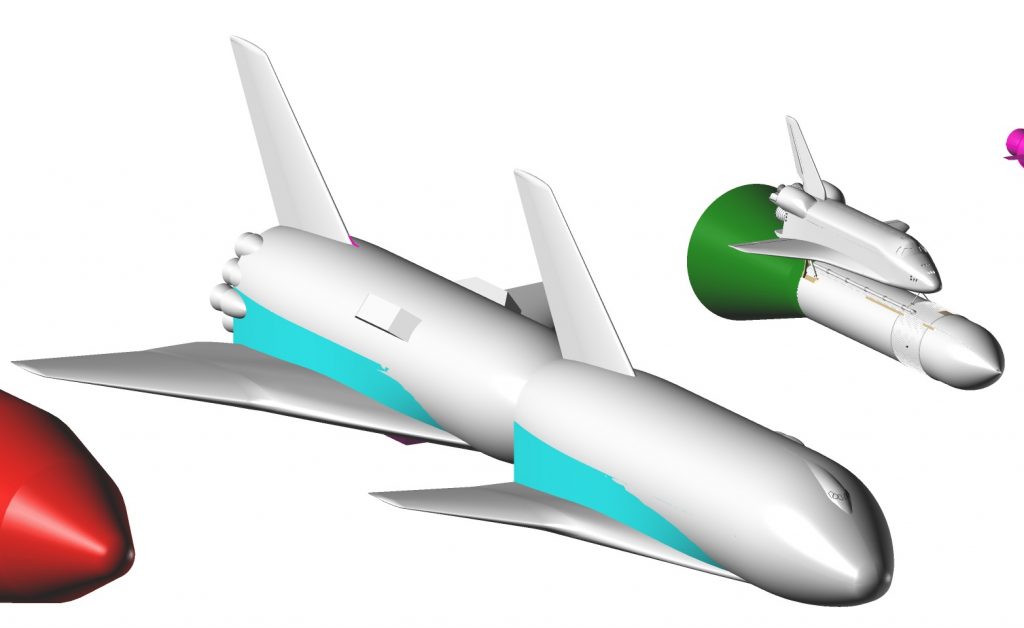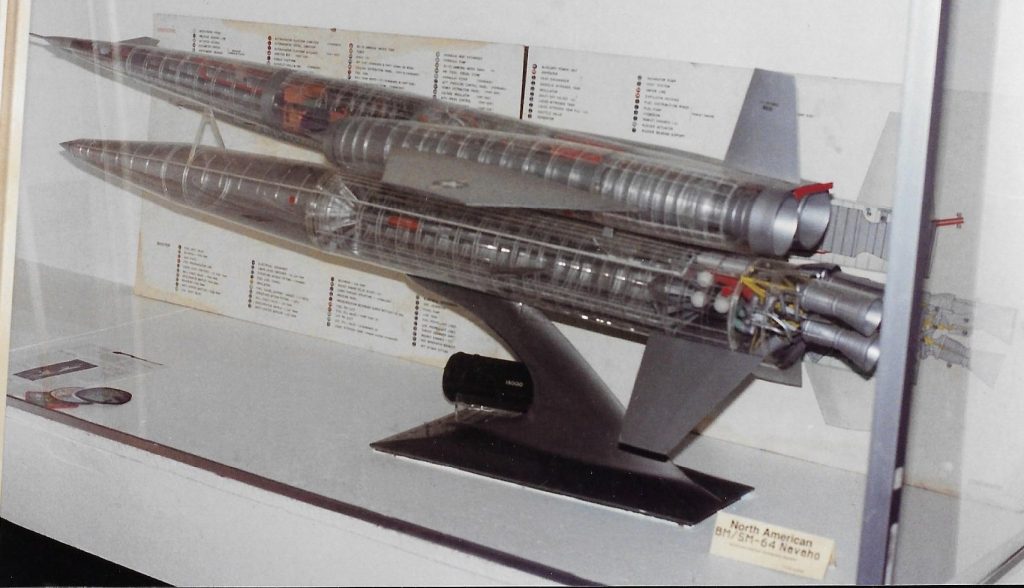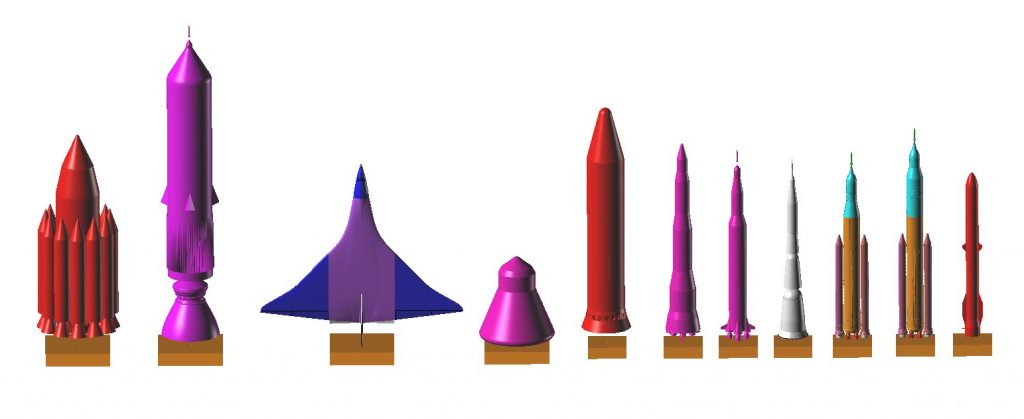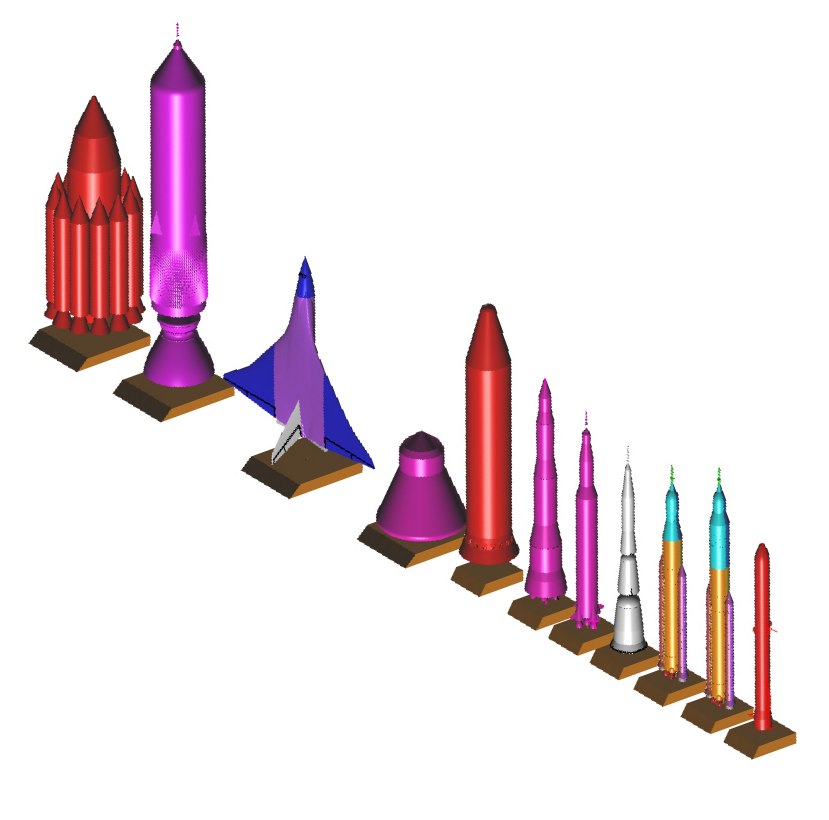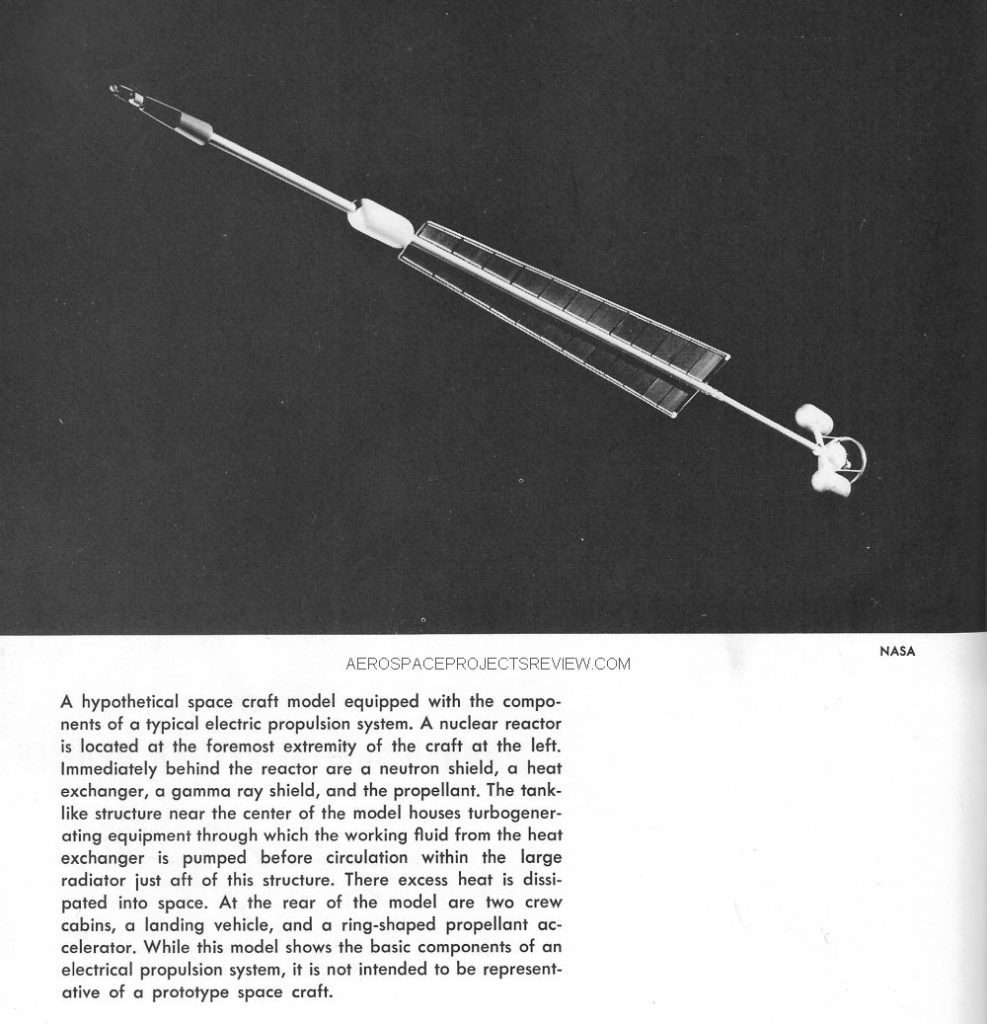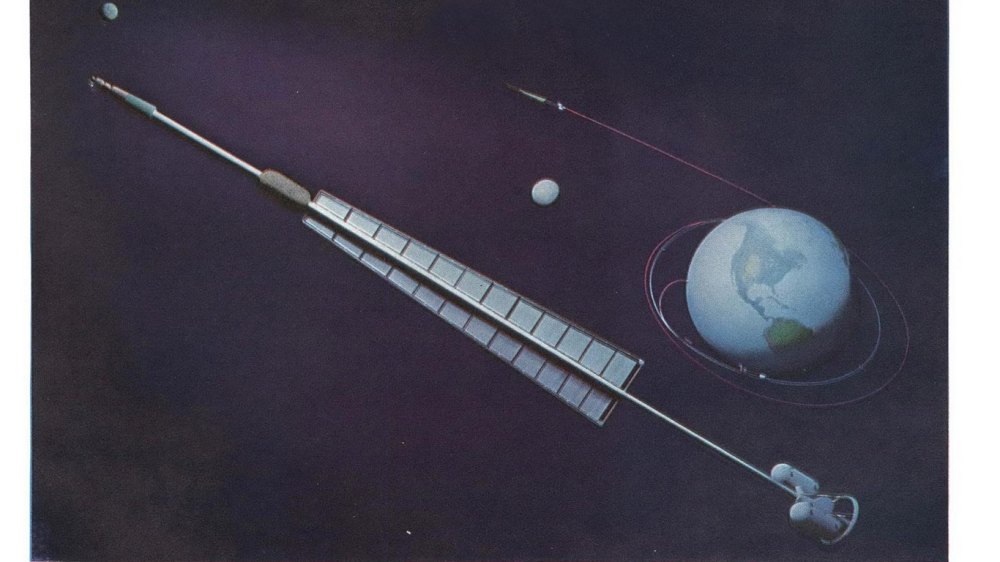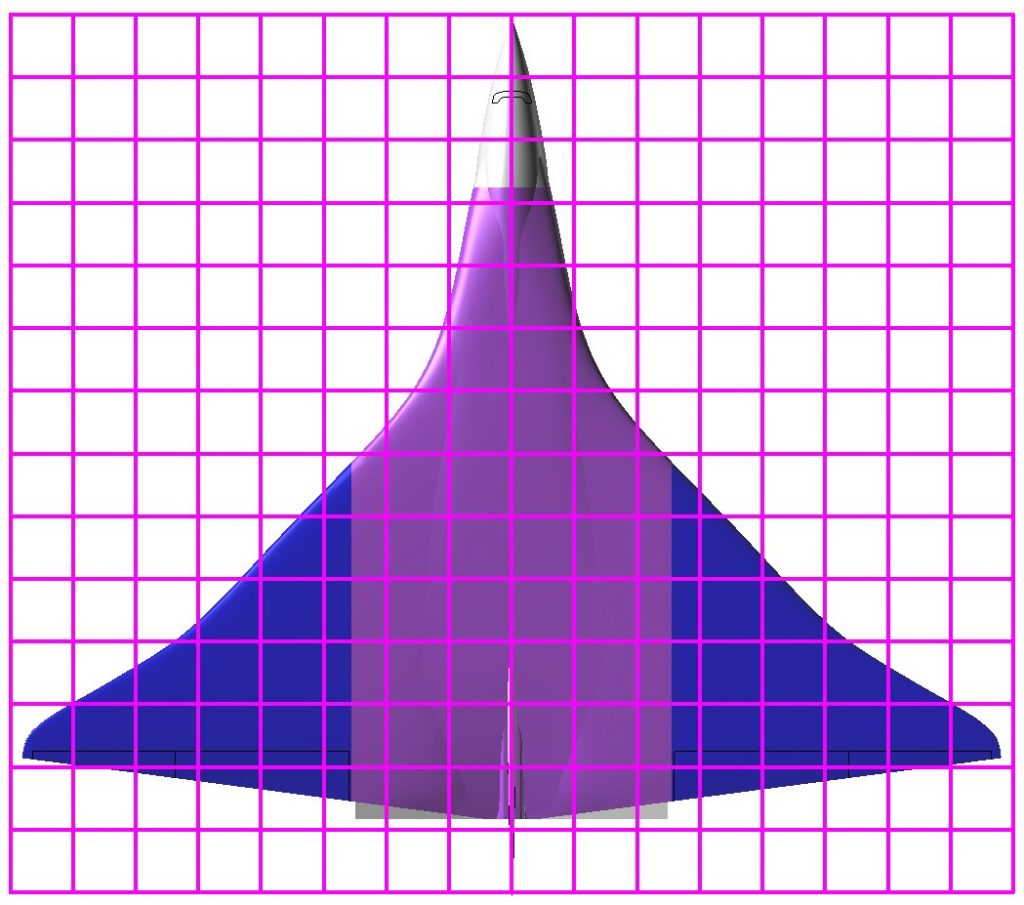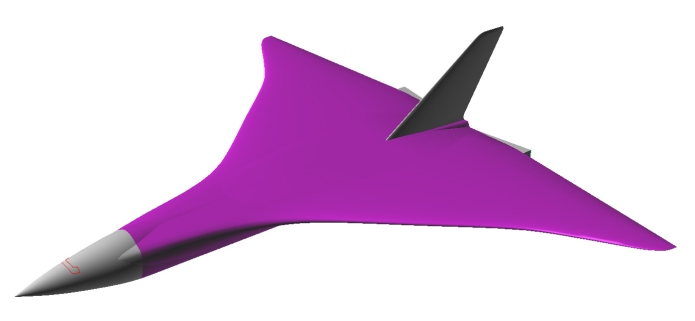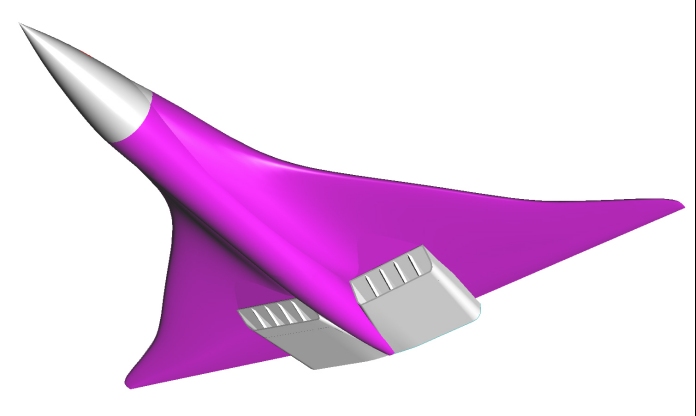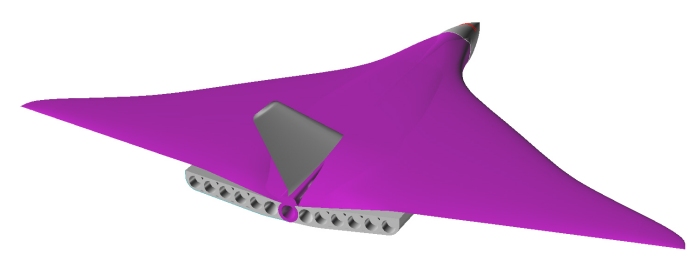Discussions with Fantastic Plastic about model sets of large boosters is starting to focus on the Nova/Post Saturn collection for the initial release. Scale is likely to be 1/700 ( the smaller boosters aren’t *too* small, the bigger boosters are impressive and it will go with any of a number of existing ship model kits), and the current lineup is shown below.
Picking which designs to include and which to exclude is a bit of trick with the Nova/Post-Saturn line, as there were literally *hundreds* of designs worthy of consideration. If anyone has a suggestion for some other design you’re dying to see, let me know. The “inches” scale bar here is for the models at 1/288 scale… which this model set assuredly *won’t* be. Fantastic Plastic has previously released a 1/288 ROMBUS and a 1/288 NEXUS and *may* release 1/288 scale models of some of the others as individual kits… but the Sea Dragon and the Super-NEXUS would be *huge.* Once the collection is finalized a single display base will be sketched out.
